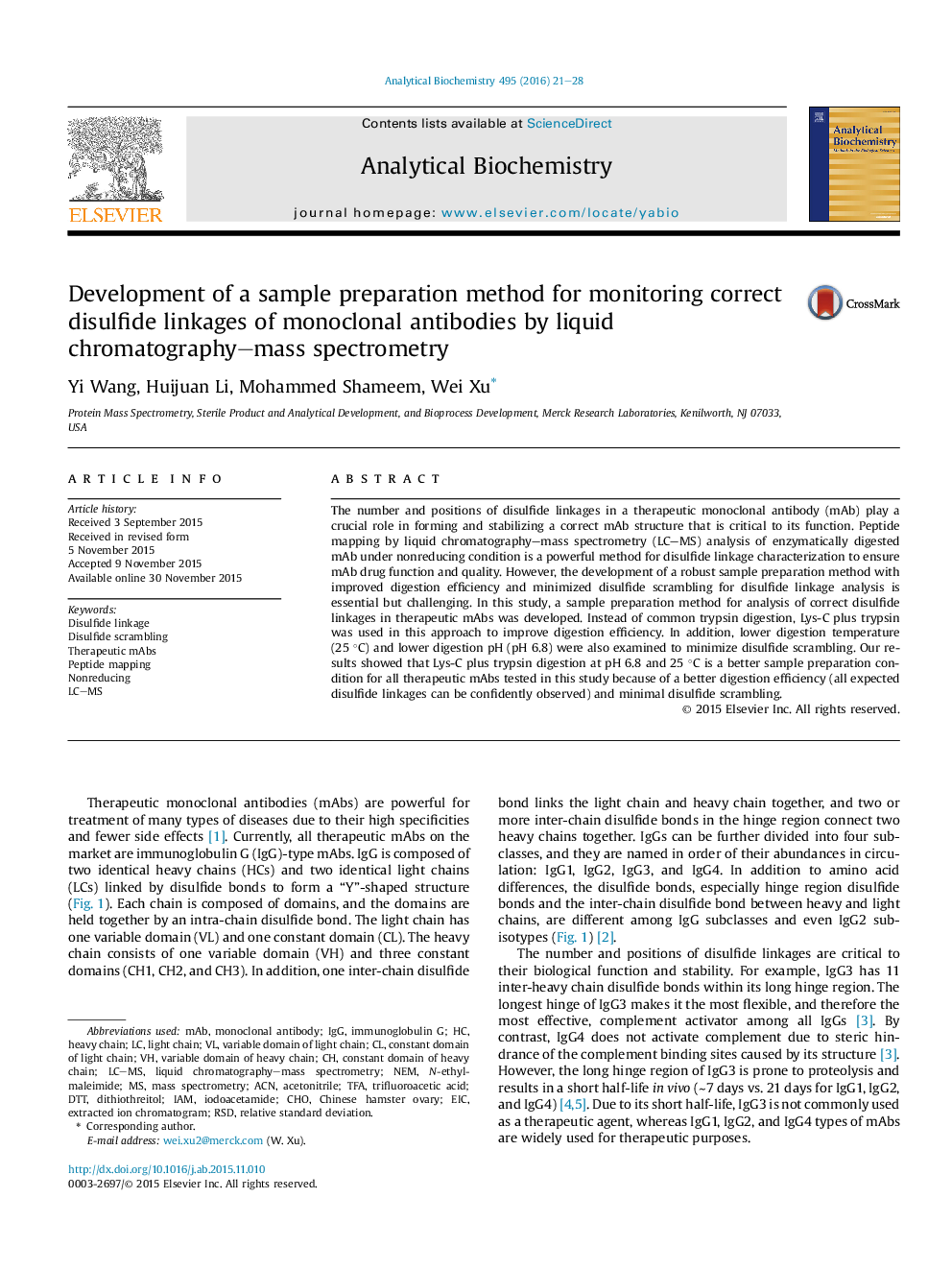| Article ID | Journal | Published Year | Pages | File Type |
|---|---|---|---|---|
| 7557713 | Analytical Biochemistry | 2016 | 8 Pages |
Abstract
The number and positions of disulfide linkages in a therapeutic monoclonal antibody (mAb) play a crucial role in forming and stabilizing a correct mAb structure that is critical to its function. Peptide mapping by liquid chromatography-mass spectrometry (LC-MS) analysis of enzymatically digested mAb under nonreducing condition is a powerful method for disulfide linkage characterization to ensure mAb drug function and quality. However, the development of a robust sample preparation method with improved digestion efficiency and minimized disulfide scrambling for disulfide linkage analysis is essential but challenging. In this study, a sample preparation method for analysis of correct disulfide linkages in therapeutic mAbs was developed. Instead of common trypsin digestion, Lys-C plus trypsin was used in this approach to improve digestion efficiency. In addition, lower digestion temperature (25 °C) and lower digestion pH (pH 6.8) were also examined to minimize disulfide scrambling. Our results showed that Lys-C plus trypsin digestion at pH 6.8 and 25 °C is a better sample preparation condition for all therapeutic mAbs tested in this study because of a better digestion efficiency (all expected disulfide linkages can be confidently observed) and minimal disulfide scrambling.
Keywords
mAbIgGRSDN-ethylmaleimideACNTFADTTLC–MSMonoclonal antibodyAcetonitrileTrifluoroacetic acidrelative standard deviationimmunoglobulin GChoChinese Hamster Ovarydithiothreitollight chainheavy chainliquid chromatography–mass spectrometryMass spectrometryIAMEICPeptide mappingNEMDisulfide linkageextracted ion chromatogramiodoacetamide
Related Topics
Physical Sciences and Engineering
Chemistry
Analytical Chemistry
Authors
Yi Wang, Huijuan Li, Mohammed Shameem, Wei Xu,
